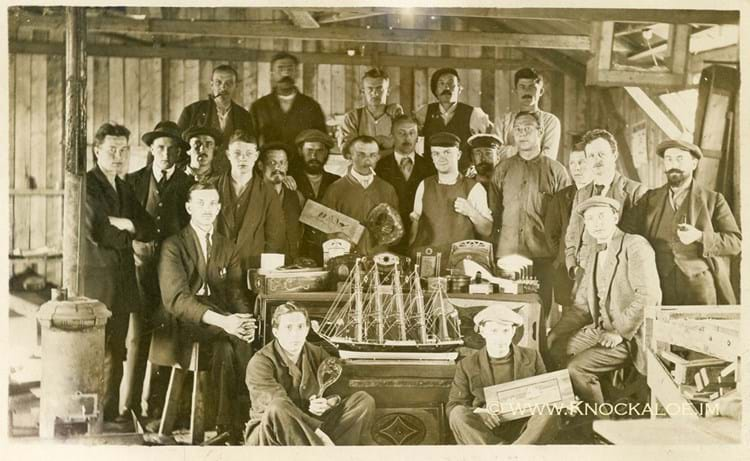
Two years ago it created a garden on the site of the camp incorporating a bronze statue of a seat by Tom Krasny, a graduate of the Master of the Fine Art Programme at the Glasgow School of Art. This was based on a seat designed by Charles Rennie Mackintosh and originally made by the internees, created for the guest bedroom of of 78 Derngate.
The seat was pictured in The Ideal Home magazine for August 1920, and also later in a January 1927 supplement to the magazine in the guest bedroom of the Bassett-Lowkes’ new house, New Ways, in Wellingborough Road, Northampton.
According to the Knockaloe Trust: “Bassett-Lowke was interested in modern design and had admired the German technology and design on show at the Paris International Exhibition of 1900.”
78 Derngate, Northampton, was bought in 1916 on behalf of Bassett-Lowke, who sought to have it redesigned in that modern style fit for his bride-to-be.
His approach to Mackintosh for designs for the interiors came at a time when Mackintosh’s career had almost dried up and he had been suffering from depression compounded by a mistaken identity accusation that he was a German spy.

An image of the Knockaloe camp created by internees – where the Rennie Mackintosh bedside cabinet sold at Lyon & Turnbull was created (photo © The Knockaloe Charitable Trust www.knockaloe.im).
Letters from Bassett-Lowke to Mackintosh surviving at The Hunterian at the University of Glasgow indicate that he was very demanding and involved client. It was Bassett-Lowke who approached the Quaker ‘industrial advisor’ to Knockaloe Civilian Internment Camp, James Baily, about the possibility of the German internees making the Mackintosh-designed furniture.
In his 1959 biography of Baily, his son, Leslie Baily, says: “Charles Matt… gathered around him some of the finest professional cabinet-makers, and the authorities allowed a couple of huts to be allocated to them. Here was made some remarkable furniture, designed on what was then ‘modernist’ lines,” for Bassett-Lowke.
“An ardent supporter of the modern movement in design – he was one of the leaders in the formation of the Design in Industries Association – Bassett-Lowke had built at Northampton a revolutionary house which he called ‘New Ways’; with its flat roof and simple surfaces, it was the first ‘modern’ house to be built in England, and it was furnished with the beautiful Knockaloe furniture of Charles Matt and his colleagues, made to the designs of the world-famous architect …. Charles Mackintosh.”
The Mackintosh-designed furniture started the furniture-making industry at the camp. The workshops later created possibly the first-ever ‘flat pack’ furniture which was made by the German civilian internees to be shipped to France for use by refugees returning to their ravaged French villages and homes in 1918.
Visitor centre
For more details on the camp see the Knockaloe Trust website below. The trust hopes the visitor centre at Knoackaloe will reopen in 2021.
Trustee and director (voluntary) Alison Jones told ATG: “We do know all about the cabinet [sold at Lyon & Turnbull] as we had been one of the bidders. We had very much wanted to bring it back to the Isle of Man where it was originally created and share it with our many visitors and descendants. Sadly the bidding simply went too high so it was not to be.”














